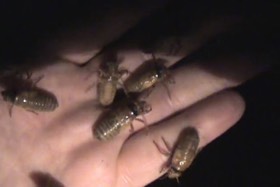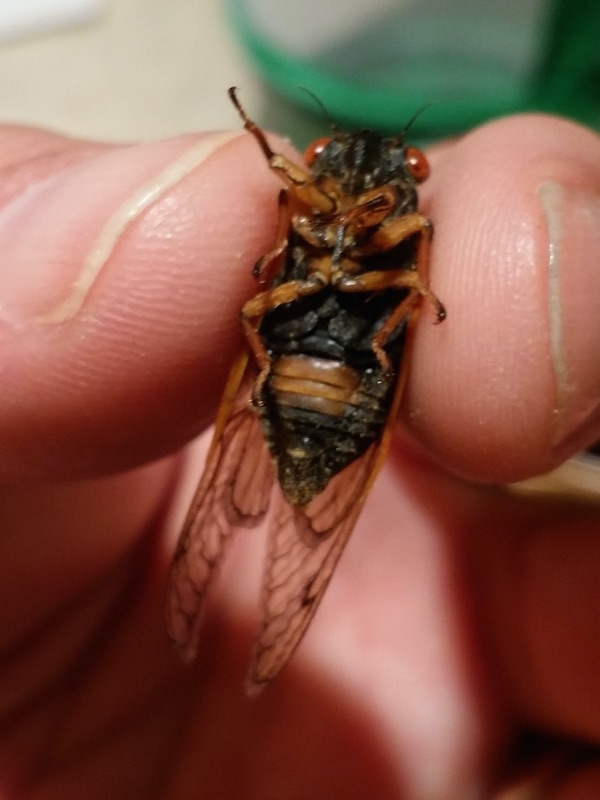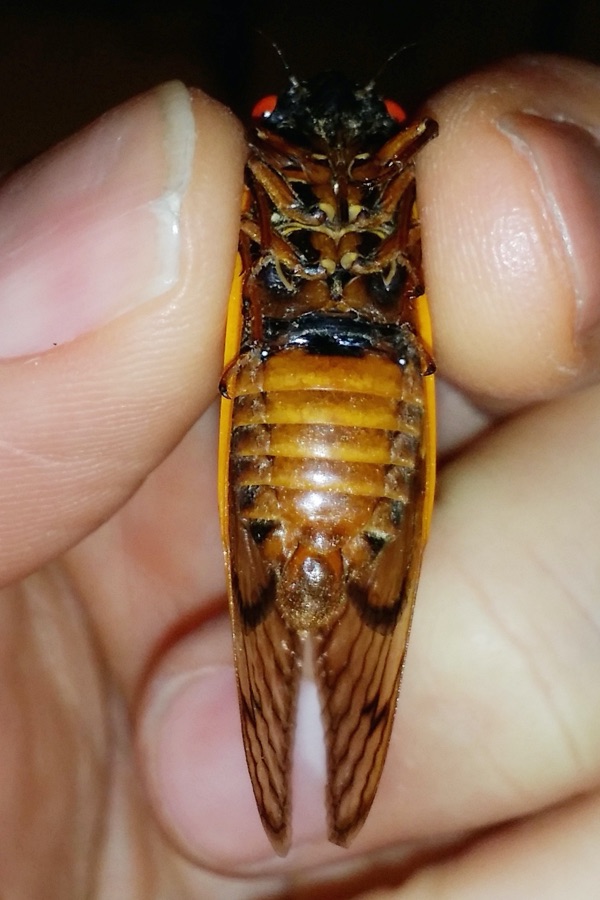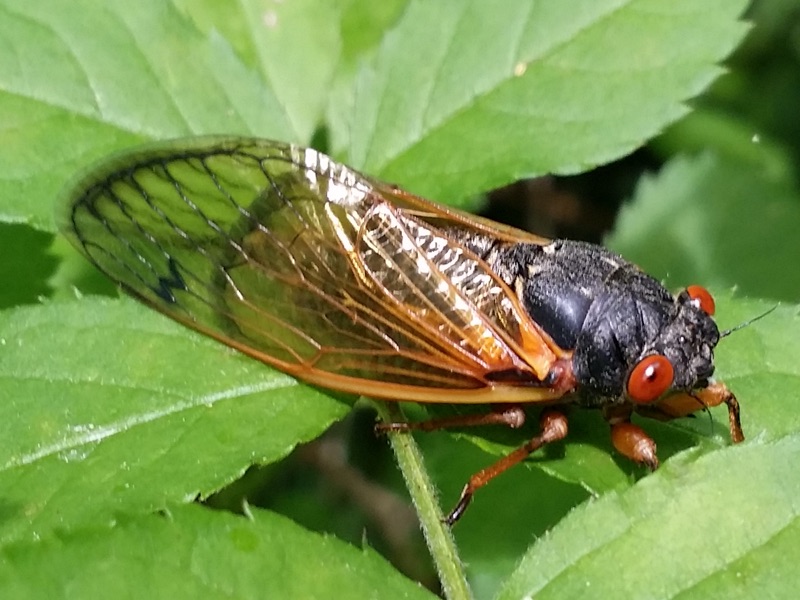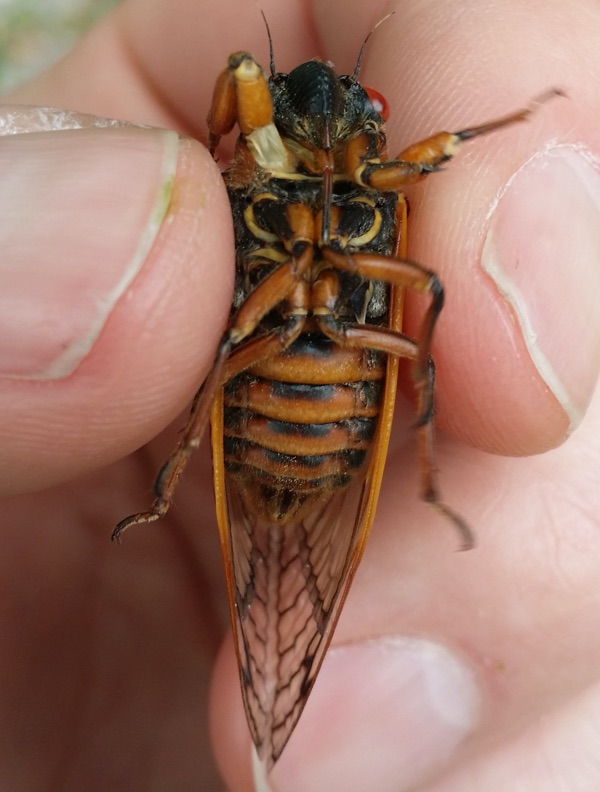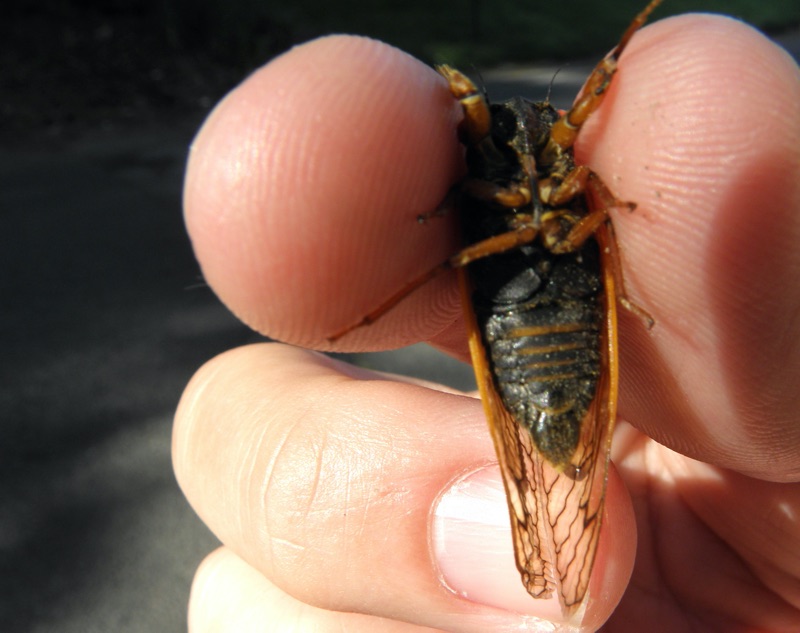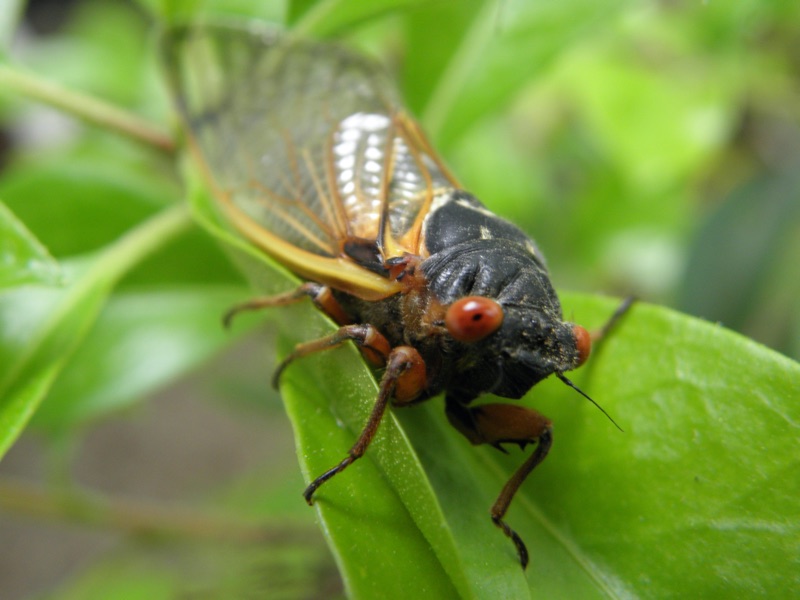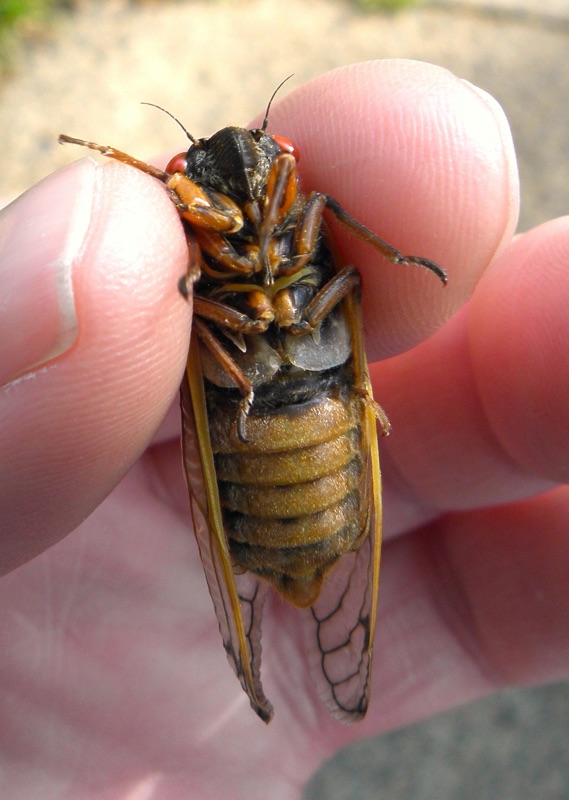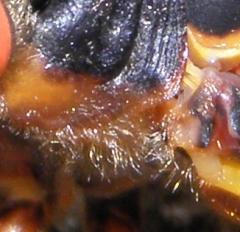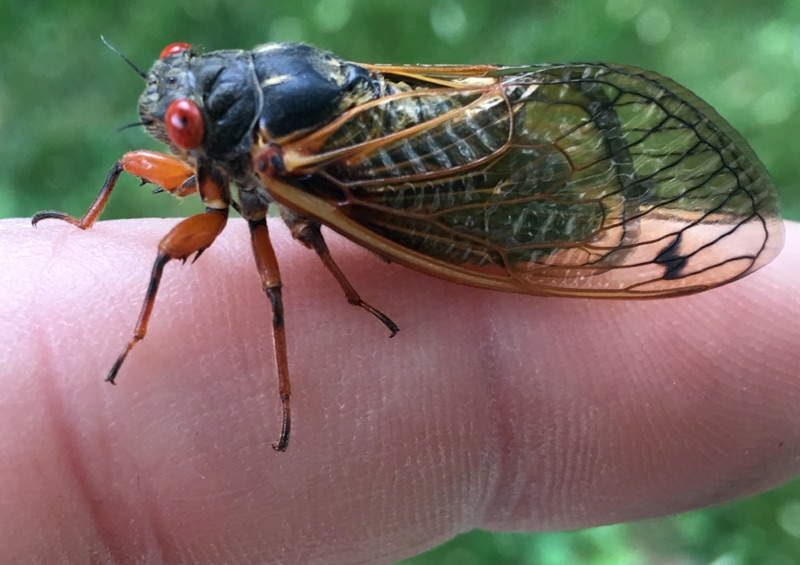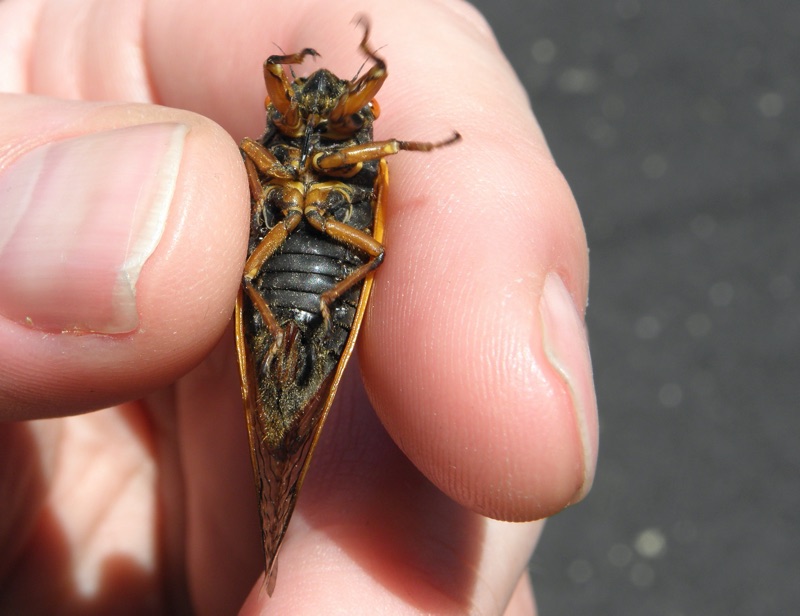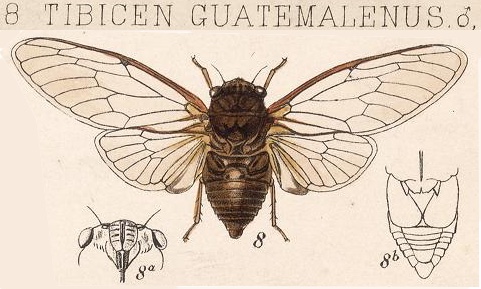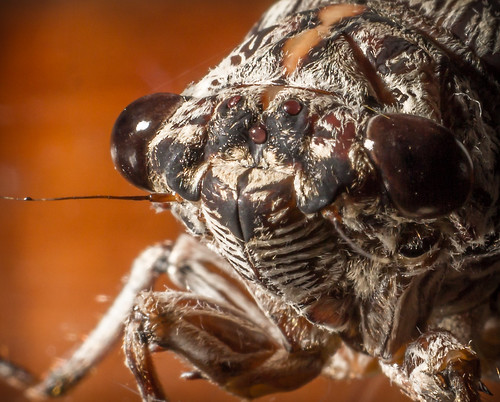Skip to a section: Broods | Your Town | Pre Emergence Signs | Compare Magicicada Species.
17 & 13 Year Periodical Cicadas
Alerts: Brood XIII (17-year) and Brood XIX (13-year) emerge in 2024. The last time these broods co-emerged was 1803. Magicicada cicadas have begun to emerge. Little by little and before you know it the full emergences will begin.
Magicicada Chorus. Recorded in New Jersey, Brood X (2004) by Dan Mozgai:
It’s not too late to buy a book!
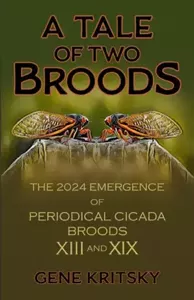
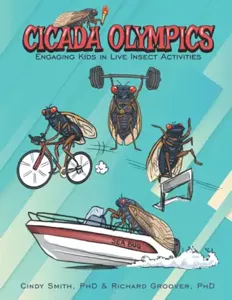
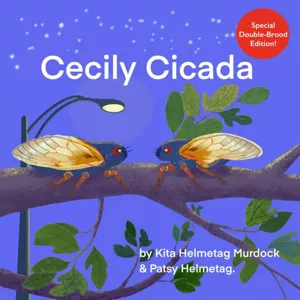
Magicicada Brood Chart
The Brood Chart features the names of the broods (Roman numerals), their life cycle length when they will emerge next, which states they’ll emerge in, links to Maps, the species that will emerge, and other information. Click the maps for larger, detailed maps.
| Brood | 17 or 13 | Year | Stragglers Probable | States & Species |
|---|---|---|---|---|
| I (1) | 17 | 1961, 1978, 1995, 2012, 2029 | 2025 (-4), 2028 (-1) |
Species: M. septendecim, M. cassini, M. septendecula. States: TN, VA, WV 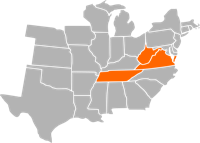
|
| II (2) | 17 | 1962, 1979, 1996, 2013, 2030 | 2026 (-4), 2029 (-1) |
Species: M. septendecim, M. cassini, M. septendecula. States: CT, GA, MD, NC, NJ, NY, OK, PA, VA 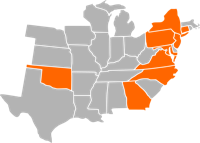
|
| III (3) | 17 | 1963, 1980, 1997, 2014, 2031 | 2027 (-4), 2030 (-1) |
Species: M. septendecim, M. cassini, M. septendecula. States: IA, IL, MO 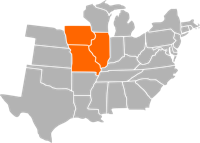
|
| IV (4) | 17 | 1964, 1981, 1998, 2015, 2032 | 2028 (-4), 2031 (-1) |
Species: M. septendecim, M. cassini, M. septendecula. States: IA, KS, MO, NE, OK, TX 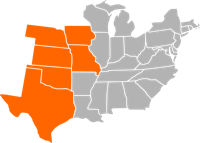
|
| V (5) | 17 | 1965, 1982, 1999, 2016, 2033 | 2029 (-4), 2032 (-1) |
Species: M. septendecim, M. cassini, M. septendecula. States: LI NY, MD, OH, PA, VA, WV 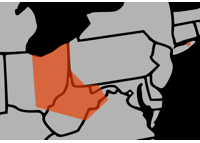
|
| VI (6) | 17 | 1966, 1983, 2000, 2017, 2034 | 2030 (-4), 2933 (-1) |
Species: M. septendecim, M. septendecula. States: GA, NC, SC, WI, OH 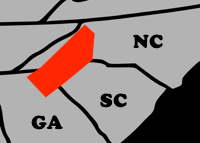
|
| VII (7) | 17 | 1967, 1984, 2001, 2018, 2035 | 2031 (-4), 2034 (-1) |
Species: M. septendecim. States: NY 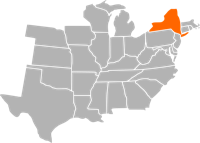
|
| VIII (8) | 17 | 1968, 1985, 2002, 2019, 2036 | 2032 (-4), 2035 (-1) |
Species: M. septendecim, M. cassini, M. septendecula. States: OH, PA, WV and OK 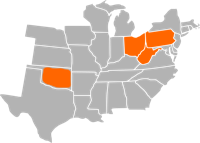
|
| IX (9) | 17 | 1969, 1986, 2003, 2020, 2037 | 2033 (-4), 2036 (-1) |
Species: M. septendecim, M. cassini, M. septendecula. States: NC, VA, WV 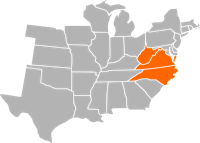
|
| X (10) | 17 | 1970, 1987, 2004, 2021, 2038 | 2034 (-4), 2037 (-1) |
Species: M. septendecim, M. cassini, M. septendecula. States: DE, GA, IL, IN, KY, MD, MI, NC, NJ, NY, OH, PA, TN, VA, WV, Washington 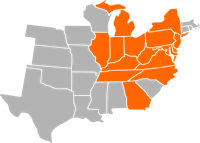
|
| XIII (13) | 17 | 1956, 1973, 1990, 2007, 2024, 2041 | 2025 (+1) |
Species: M. septendecim, M. cassini, M. septendecula. States: IA, IL, IN, MI, WI 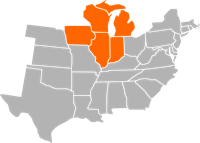
|
| XIV (14) | 17 | 1957, 1974, 1991, 2008, 2025, 2042 | 2024 (-1) |
Species: M. septendecim, M. cassini, M. septendecula. States: GA, IN, KY, MA, MD, NC, NJ, NY, OH, PA, TN, VA, WV 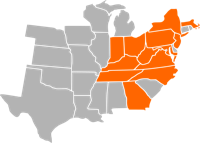
|
| XIX (19) | 13 | 1972, 1985, 1998, 2011, 2024, 2037 | 2025 (+1), 2028 (+4) |
Species: M. tredecim, M. neotredecim, M. tredecassini, M. tredecula. States: AL, AR, GA, IA, IL, IN, KY, LA, MD, MO, MS, NC, OK, SC, TN, VA 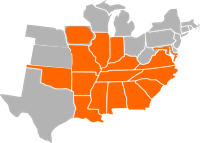
|
| XXII (22) | 13 | 1975, 1988, 2001, 2014, 2027, 2040 | 2026 (-1), 2032 (+4) |
Species: M. tredecim, M. tredecassini, M. tredecula. States: KY, LA, MS, OH 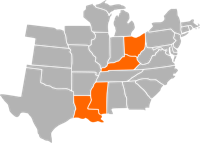
|
| XXIII (23) | 13 | 1976, 1989, 2002, 2015, 2028, 2041 | 2024(-4), 2027 (-1) |
Species: M. tredecim, M. neotredecim, M. tredecassini, M. tredecula. States: AR, IL, IN, KY, LA, MO, MS, TN 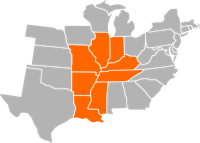
|
When will they emerge?
Generally speaking, these cicadas will begin to emerge when the soil 8″ beneath the ground reaches 64 degrees Fahrenheit (Heath, 1968). A nice, warm rain will often trigger an emergence. They typically emerge in May but have been known to emerge in late April or early June. It all depends on the weather.
What should you look for before they emerge?
Chimneys / Turrets
Look for cicada chimneys a.k.a. turrets. These are structures cicadas build out of the soil, positioned above the hole where they will emerge.
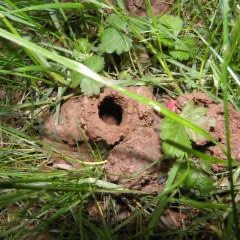
Holes
Look for holes in the diameter of an adult’s finger near the root system of a tree. These are sure signs that cicadas will emerge in the area.
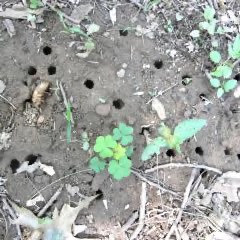
Cicadas Under Stones & Slates
You might discover some cicada nymphs while turning over stones or when performing landscaping chores.
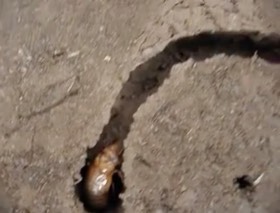
What do they look like when they emerge:
Here is a great video of Magicicada nymphs once they have emerged from the ground:
This is a recently emerged nymph crawling up a tree. Note that its eyes are red.
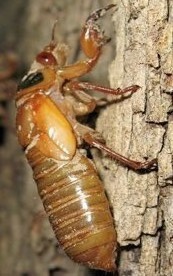
Once cicadas nymphs have emerged from the ground, they will try to find a tree (or similar vertical surface), and then begin the process of shedding their old nymph skins (ecdysis), expanding their wings, and changing to their adult coloring. Watch this amazing transformation.
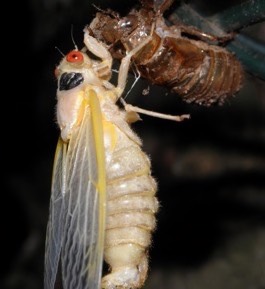
How to tell the difference between the seven Magicicada species:
Left to right: Magicicada cassini, Magicicada septendecula, Magicicada septendecim:
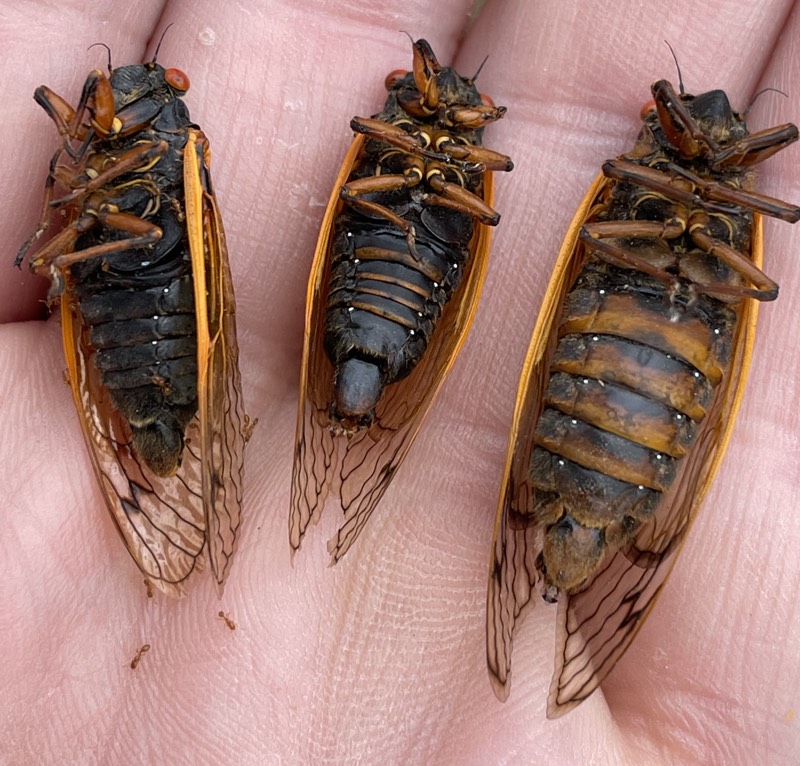
The first way is based on the Brood. Take a look at the Brood chart above, and see which species appear with the Brood.
There are 3 basic types of Magicicada: “‘Decims”, “‘Cassini” and “‘Deculas”.
“Decims” aka Pharaoh Cicadas
There are three species in this category:
- Magicicada septendecim (Linnaeus, 1758). 17-year life cycle. Broods: I-X, XIII, XIV.
- Magicicada neotredecim Marshall and Cooley 2000. 13-year life cycle. Broods: XIX, XXIII.
- Magicicada tredecim (Walsh and Riley, 1868). 13-year life cycle. Brood: XIX, XXII, XXIII.
Their songs are very similar, however, when M. neotredecim & M. tredecim emerge in the same location, M. neotredecim’s song takes a higher pitch. Sounds like “Pharaoh, Pharaoh!”.
Visual Appearance:
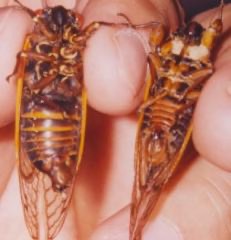
Male on left; Female on right.
M. neotredecim & M. septendecim have broad orange stripes with more orange than black on their abdomens.
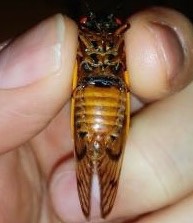
M. tredecim, by comparison, have almost entirely orange abdomens.
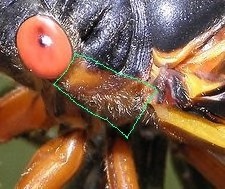
M. septendecim cicadas also have an area of orange coloring between the eye and the wing (pronotal extension).
“Cassini” aka Dwarf Cicadas
There are two species in this category:
- Magicicada cassini (Fisher, 1851). 17-year life cycle. Broods: I-V, VIII-X, XIII, XIV.
- Magicicada tredecassini Alexander and Moore, 1962. 13-year life cycle. Broods: XIX, XXII, XXII.
Their songs are essentially identical:
M. cassini Call and Court:
Note how it makes a quick burst of sound, followed by some rapid clicks.
Visual Appearance:
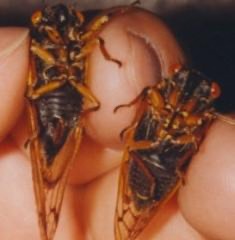
Female on left; Male on right.
M. tredecassin & M. cassini cicadas have black abdomens with virtually no orange at all. Orange stripes are possible in the mid-west (important to note for Brood IV).
“Decula”
There are two species in this category:
- Magicicada septendecula Alexander and Moore, 1962. 17-year life cycle. Broods: I-VI, VIII-X, XIII, XIV.
- Magicicada tredecula Alexander and Moore, 1962. 13-year life cycle. Broods: XIX, XXII, XXIII.
Their songs are essentially identical:
M. tredecula Call:
Note the “tick, tick, tick” rhythm of the call.
Visual Appearance:
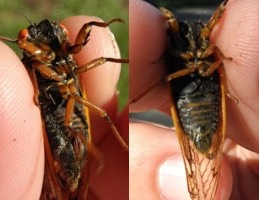
Female on left; Male on right.
M. septendecula & M. tredecula have stripes that feature more black than orange. Otherwise, they’re very similar to M. cassini.
How to figure out if they’re coming to your town?
- Verify that they’re coming to your state. Check the Magicicada Brood Chart on this page.
- Check Cicada Brood Maps linked from this page to see if they’re coming to your general area.
- Check to see if they’re coming to your neighborhood. Good sources include:
- Check the Cicada Central Magicicada Database to see the counties where cicadas have appeared in the past.
- Ask someone who lived there 17 (or 13) years before.
- Old timers (hint: old timers usually call them locusts).
- Check your local Library for old newspaper articles.
- Check with a local college: contact the entomology, forestry, or agriculture-related departments.
- Your local national, state, county, and town parks department (parks and rec). Some county parks departments plan events around cicada emergences.
- When will they emerge?
- They will emerge sometime in the Spring, for sure.
- They typically emerge once the soil 8 inches (20 cm) below the surface gets to 64 degrees Fahrenheit (18 degrees Celcius). At that temperature, they will start digging their tunnels to the surface. After a couple of days with above-ground temperatures near the 80’s F, and after a good rain, they will emerge. Read this paper for more info: Thermal Synchronization of Emergence in Periodical “17-year” Cicadas (Homoptera, Cicadidae, Magicicada) by James Edward Heath, American Midland Naturalist, Vol. 80, No. 2. (Oct. 1968), pp. 440-448.
- Cicadas in sunny areas of your yard will emerge before cicadas in shady areas.
- Cicadas in the southernmost states will emerge before cicadas in the northern states.
- You can try the Cicada Emergence Formula as well.
- If you don’t want them to damage your young or ornamental trees
- Spray them off with a garden hose.
- Foil around the trunk (to keep them from crawling up) (thanks Deborah).
- Insect barrier tape.
- Netting wrapped around & over the tree. “Insect barrier netting”. “Fruit tree covers”.
- Bagpipes (no joke, it worked at my friend’s wedding).
- Don’t use pesticides – we like all insects (especially pollinating bees).
- Are you scared of insects?
- Unlike some other insects & arthropods. cicadas are not poisonous or venomous.
- Try a hat, an umbrella, a bee-keeper outfit, a suit of armor…
- They’re coming, and they’re going to ruin my wedding!
Questions about the Brood Chart
Question: Why do I have cicadas in my neighborhood, but your chart indicates that I shouldn’t?
Answer: Some possibilities: 1) they are stragglers, periodical cicadas that emerge too soon or late, 2) they are not periodical cicadas but are a different North American species, 3) you live on a continent other than North America, in which case, try one of these pages, or 4) SURPRISE! The U.S. is a big place and some cicada populations have yet to be documented.
Question: Why don’t I have periodical cicadas in my area, but the information on your website indicates that I should?
Answer: Two possibilities: 1) they went extinct or otherwise died off in your area, or 2) they aren’t everywhere in a state – normally there are large gaps in their range.
Question: What are stragglers?
Answer: Stragglers can emerge 1 or 4 years early or 1 or 4 years late. Don’t be surprised if you see some periodical cicadas emerge earlier than planned this year. 17-year brood members are most likely to straggle 4 years early, and 13-year brood members are most likely to straggle 4 years late. Straggler probability chart.
Question: Why are there no Brood XI, XII, XV, or XVI?
Answer: Perhaps you’ve noticed there are no Broods XI (11), XII (12), XV (15), XVI (16), XVII (17), XVIII (18), XX (20), XXI (21), XXIV (24), etc. Don’t worry about that. They never existed or are extinct (XI, XXI).
Example Emergence Timeline
This is an example of a typical cicada emergence. The exact dates will depend on the weather and density of the emergence in your location. Hot weather means an early start and quicker finish to the season — cool weather means a later start and a protracted season.
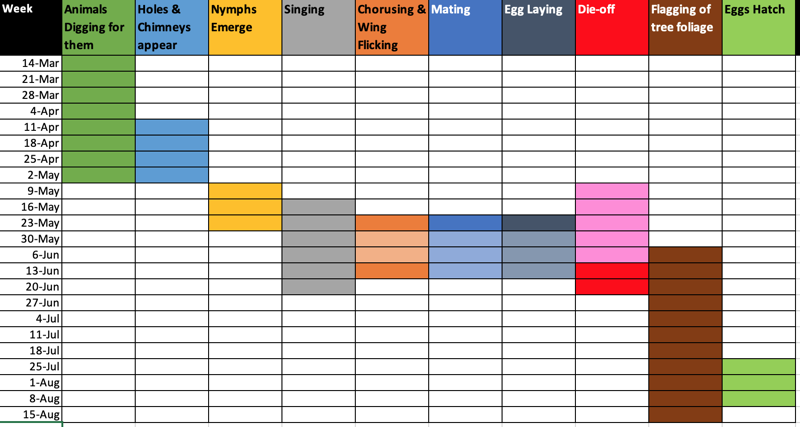
Here’s an Excel version of the chart. Feel free to use it and adjust it to match your experience.
Or watch the video version:
More Magicicada websites:
- For much more information about 17-year cicadas visit Cicadas @ UCONN (formerly Magicicada.org). The maps on this page link to that site.
- The Cicada Safari App is available for Android and Apple devices. Use it to see where people are finding cicadas, and to report your sightings.
- A Tale of Two Broods: The 2024 Emergence of Periodical Cicada Broods XIII and XIX book by Dr. Gene Kritsky.
- Check the Cicada Central Magicicada Database to see the counties where cicadas have appeared in the past. For more information about this database and cicada research in general, visit the Simon Lab website.
More Magicicada Information
- A quick way to tell the difference between the 7 periodical cicada species
- All cicada questions that are frequently asked.
- Pictures of Magicicadas
- Blog posts about Magicicadas (390+ Posts!)
- Learn to tell if a periodical cicada is ready to molt
- Our periodical cicada timeline spreadsheet is updated for 2024.
- The 17 Most Interesting Periodical Cicada Facts
- Signs periodical cicadas are about to emerge.
- Use the Periodical Cicada Emergence Checklist for the Maximum Magicicada Experience
- A video to help you tell the difference between the species

